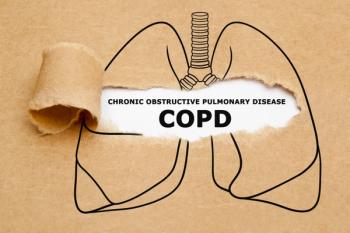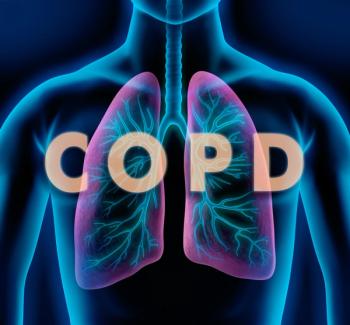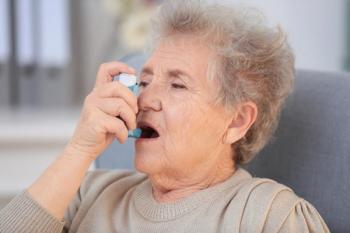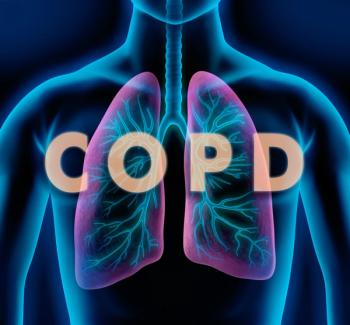
COPD
Latest News

Latest Videos

CME Content
More News

Patients with chronic obstructive pulmonary disease (COPD) on triple therapy face an increased cardiovascular risk.

Patients with chronic obstructive pulmonary disease (COPD) and reduced physical activity showed a higher risk of emergency department visits or hospitalizations in a recent study.

No causal association with psychiatric disorders was observed in patients with chronic obstructive pulmonary disease (COPD) without a smoking history, while ever-smokers with COPD had a greater risk of developing attention-deficit/hyperactivity disorder (ADHD).

Compared with patients with only chronic obstructive pulmonary disease (COPD), patients with COPD and anxiety and/or depression had increased clinical and economic burden.

Inhaled chronic obstructive pulmonary disease (COPD) medications prescribed before surgery in patients with early-stage non–small cell lung cancer (NSCLC) were associated with both short- and long-term outcomes.

The researchers explained that their findings expanded upon evidence of the harmful respiratory effects of night shifts while also providing valuable evidence for the development of COPD prevention strategies.

Virtual reality (VR) combined with pulmonary rehabilitation was more effective than pulmonary rehabilitation alone in improving the pulmonary function, exercise capacity, and mental health of patients with chronic obstructive pulmonary disease (COPD).

Shifting from an opt-in to an opt-out approach boosted palliative care consults from 16.6% of eligible patients to 43.9%, the investigators found.

Gabapentinoid use, namely gabapentin and pregabalin, was associated with increased risk for severe chronic obstructive pulmonary disease (COPD) exacerbation in patients with epilepsy, neuropathic pain, and other chronic pain.

The study's findings suggest that high baseline white blood cell count, particularly high neutrophil count, was associated with a higher incidence of long-term acute exacerbation of chronic obstructive pulmonary disease (COPD).

These study results suggest that cigars, when used in combination with cigarettes, may be associated with poorer chronic obstructive pulmonary disease (COPD) health outcomes.

This year’s most-read articles on chronic obstructive pulmonary disease (COPD) explored a variety of topics concerning patients with COPD, including long-acting inhaler adherence and their risk of falling.

Chronic obstructive pulmonary disease (COPD) is associated with fatal events in the long-term prognosis of stroke, but the association between COPD and short-term death in patients with stroke is insignificant.

Patients with uncontrolled chronic obstructive pulmonary disease (COPD) and type 2 inflammation had significantly better lung function at least a year into a dupilumab regimen.

The mean projection of patients' emotions and dyspnea was more optimistic than what was eventually observed.

Researchers explained that developing preventative strategies and improving air quality to reduce the concentrations of air pollutants can help to reduce the hospitalizations of patients with chronic obstructive pulmonary disease (COPD).

Based on Behavioral Risk Factor Surveillance System data, about 6.4% of US adults in 2011 (14.3 million people) and about 6.5% (14.2 million) had COPD in 2021, showing that COPD prevalence did not significantly change throughout the decade.

Patients with chronic obstructive pulmonary disease (COPD) who were from minority ethnic backgrounds were found to have lower adherence to treatment interventions compared with the general population.

Compared with those without chronic obstructive pulmonary disease (COPD), patients with both sepsis and COPD had higher intensive care unit (ICU) mortality rates, longer ICU stays, and higher in-hospital mortality rates.

High levels of phenotypic age acceleration (PhenoAgeAccel) were found to have a more significant effect on lung function in patients with chronic obstructive pulmonary disease (COPD), older patients, and White patients.

Researchers found that heated tobacco products can reduce risks of exacerbations and exposure to toxic chemicals compared with combustible cigarettes in patients with chronic obstructive pulmonary disease (COPD).

The researchers noted that their findings highlight the need to understand the challenges in delivering evidence-based care for chronic obstructive pulmonary disease (COPD).

The chosen studies featured various methods to assess medication use initiation, implementation, and/or persistence in patients with chronic obstructive pulmonary disease (COPD).

The researchers found that social frailty was prevalent in 36.8% of patients with chronic obstructive pulmonary disease (COPD) in the study population.

New data on dupilumab demonstrate the drug’s potential usefulness in treating type 2 inflammation, a role central to respiratory diseases, including chronic obstructive pulmonary disease (COPD).




















































